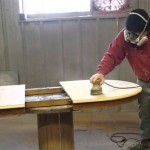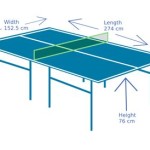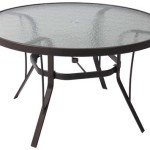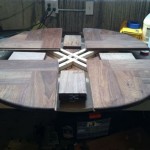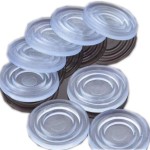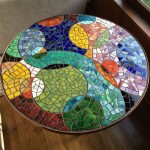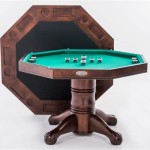How Much Does A Solid Wood Dining Table Weigh?
Determining the weight of a solid wood dining table is not a simple task, as several factors influence the final figure. This article will explore these factors in detail, providing a comprehensive understanding of the weight considerations associated with solid wood dining tables.
Solid wood dining tables are prized for their durability, aesthetic appeal, and longevity. They represent a significant investment and often become focal points in homes. Understanding their weight is crucial for various reasons, including transportation, installation, and ensuring the structural integrity of the floor on which they are placed. Moving a heavy table can be challenging and necessitates careful planning and potentially professional assistance. Heavier tables may also require reinforced flooring in some cases, particularly in older homes.
The weight of a solid wood dining table is a complex equation involving the type of wood used, the dimensions of the table, and the design and construction methods employed. These factors interact to determine the overall mass of the finished piece. Therefore, a precise answer to the question of how much a solid wood dining table weighs necessitates a thorough examination of each of these contributing elements.
The Impact of Wood Species on Table Weight
One of the most significant determinants of a solid wood dining table's weight is the type of wood used in its construction. Different wood species exhibit varying densities, directly affecting the weight of the finished table. Wood density is typically measured in pounds per cubic foot (lbs/ft³) or kilograms per cubic meter (kg/m³). Denser woods are inherently heavier than lighter woods when used to construct the same size table.
Hardwoods, generally derived from deciduous trees, tend to be denser and therefore heavier than softwoods, which are typically sourced from coniferous trees. However, this is a generalization, and there are exceptions within both categories. For example, some softwoods, like Douglas fir, can be denser than some hardwoods, like poplar.
Common hardwoods used in dining table construction include oak, maple, walnut, cherry, and mahogany. Oak is a popular choice due to its strength and durability, but it is also relatively heavy, with a density ranging from 45 to 55 lbs/ft³. Maple is another strong and durable option, with a similar density to oak. Walnut is prized for its rich color and beautiful grain, and its density falls in the range of 38 to 45 lbs/ft³. Cherry is known for its warm reddish tones and is slightly lighter than walnut, with a density around 35 to 40 lbs/ft³. Mahogany, often associated with high-end furniture, has a density similar to cherry.
Softwoods, while less common in high-end dining tables, may be used in certain styles or for specific components. Pine is a readily available and affordable softwood, but it is significantly lighter than the hardwoods mentioned above, with a density around 25 to 35 lbs/ft³. Cedar is another softwood option, known for its aromatic properties and insect-repellent qualities. Its density is comparable to pine.
To illustrate the impact of wood species on weight, consider two dining tables of the same size: 6 feet long, 3 feet wide, and 1.5 inches thick. If one table is constructed from oak (50 lbs/ft³) and the other from pine (30 lbs/ft³), the oak table will be significantly heavier. The oak table would weigh approximately 281 pounds, while the pine table would weigh approximately 169 pounds. This difference of over 100 pounds highlights the substantial influence of wood density on overall table weight.
Therefore, when considering a solid wood dining table, it is essential to inquire about the wood species used. A table made from a denser wood will inevitably be heavier and may require more robust handling and floor support.
The Influence of Table Dimensions and Design
Beyond the type of wood, the physical dimensions of the dining table, namely its length, width, and thickness, exert a direct influence on its weight. The larger the table, the more wood is required, and consequently, the greater the weight. Additionally, the design of the table, including the presence of leaves, aprons, and elaborate leg structures, can add to the overall mass.
A larger table surface area inherently requires more material. A 10-foot long dining table will weigh significantly more than a 6-foot long table made from the same wood species and with the same thickness. Similarly, a wider table will also be heavier than a narrower table of the same length and thickness.
The thickness of the tabletop is another crucial factor. A table with a 2-inch thick top will be considerably heavier than one with a 1-inch thick top, all other factors being equal. The thickness directly correlates with the volume of wood used, and volume directly impacts weight.
The design of the table also plays a role. Extending dining tables with leaves will weigh more than fixed-size tables due to the added material of the leaves and the mechanisms required to extend and retract them. Tables with aprons, which are decorative or structural elements that connect the tabletop to the legs, will also weigh more than tables without aprons.
The design of the legs can also contribute to the overall weight. Thick, solid wood legs will be heavier than thinner, more streamlined legs. Intricately carved legs or legs with elaborate joinery will also add weight. Furthermore, tables with pedestal bases, which often involve a substantial amount of wood for support, will typically be heavier than tables with four individual legs.
To illustrate the impact of dimensions, consider two tables made from the same wood species (oak, 50 lbs/ft³). One table is 6 feet long, 3 feet wide, and 1.5 inches thick, while the other is 8 feet long, 4 feet wide, and 2 inches thick. The first table, as calculated earlier, weighs approximately 281 pounds. The second table would weigh approximately 500 pounds, a substantial difference attributable to the increased dimensions.
Therefore, when estimating the weight of a solid wood dining table, carefully consider its length, width, thickness, and the complexity of its design. Larger dimensions and more elaborate designs will invariably result in a heavier table.
Construction Methods and Hardware
The specific methods used to construct the dining table, along with the type and amount of hardware employed, can also influence its overall weight, although typically to a lesser extent than wood species and dimensions. Glue, screws, bolts, and metal supports can contribute to the final weight of the piece.
Solid wood furniture is often constructed using joinery techniques such as dovetail joints, mortise and tenon joints, and rabbet joints. These techniques create strong and durable connections between wood components. While these joints primarily rely on the interlocking of wood pieces, glue is often used to reinforce the joints and provide additional stability. The amount of glue used can vary depending on the specific joints and the overall construction quality. Excessive glue usage can add slightly to the weight, but this contribution is usually minimal compared to the weight of the wood itself.
Screws and bolts are commonly used to fasten various components of the table, such as attaching the legs to the tabletop or securing the leaves of an extension table. The type and size of the screws or bolts will affect their weight. Larger and more numerous fasteners will contribute more to the overall weight than smaller and fewer ones.
Metal supports may be incorporated into the table's design to provide additional structural integrity, especially for larger tables or those with complex designs. Steel or iron supports can add significant weight, depending on their size and quantity. These supports are often used in the legs or base of the table to enhance stability and prevent warping or sagging.
The type of finish applied to the table can also have a minor impact on weight. Finishes such as varnish, lacquer, or polyurethane add a protective layer to the wood surface and can slightly increase the overall weight. However, the weight contribution of the finish is typically negligible compared to the weight of the wood and hardware.
While construction methods and hardware contribute to the overall weight, their impact is generally less significant than that of the wood species and dimensions. A well-constructed table will prioritize strength and durability, and the weight contribution of the joinery, fasteners, and supports is a necessary consequence of ensuring a robust and long-lasting piece of furniture.
In summary, accurately determining the weight of a solid wood dining table requires a careful assessment of the wood species, dimensions, design, and construction methods employed. Each of these factors contributes to the overall mass of the table, and understanding their influence is essential for proper planning and handling.

Yaoping 72 Rustic Farmhouse Solid Wood Dining Table With Metal Frame Rectangular Kitchen And For Home Office Furniture Brown In Com

48 Inch Solid Wood Dining Table With Rubber Supporting Legs For Kitchen Room Costway

Are There Any Weight Limits Or Restrictions For Solid Wood Dining Tabl Picket Rail Custom Furniture Interiors

Noble House Wren Rectangular Natural Oak Brown 6 Seater Wooden Dining Table 54546 The Home Depot

Sunnydaze Decor 47 In Rectangular Teak Stain Finish Outdoor Dining Table Jva 360 The Home Depot

Farmhouse Round Extendable Dining Table With 16 Leaf Kitchen Room X Shaped Base 300lbs Weight Capacity Solid Wood For Living Natural Wash Com

Sunnydaze Decor James 4 Ft Natural Rectangular Dining Table Bwd 832 The Home Depot

Lindo 68 5 Solid Wood Dining Table Yes Overall Weight 51 Lb Com

Villani Drop Leaf Rubberwood Solid Wood Dining Set Weight Capacity 300 Lb This 5 Piece Includes A Beautiful Table And 4 Chairs Our Wooden Are Cons Com

Zareen Pine Solid Wood Dining Table Base Material Manufactured Overall Weight 59 Lb Com


